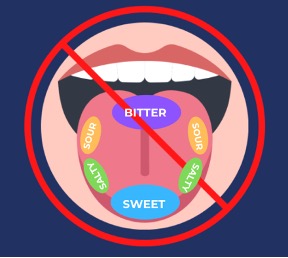The Taste Map: Really?

Target audience: Ages 6 and older.
Goal(s): To learn that we detect all tastes in all parts of the tongue.
Materials:
- Table sugar
- Salt
- Lemon juice (1 1/2 lemon)
- Chicken or meat bouillon cube
- Instant coffee or unsweetened cocoa powder
- 5 cotton swabs
- 6 cups half-filled with water (~4 oz)
- Add 2 ½ tablespoons of sugar to half a cup of water
- Add 1 teaspoon of salt to half a cup of water
- Add 3 tablespoons of lemon juice to half a cup of water
- Add ¼ chicken or meat bouillon cube to half a cup of water and heat for 30 seconds in the microwave
- Add 1 ½ tablespoons of instant coffee or 1 tablespoon of unsweetened cocoa powder to half a cup of water
- Try each solution with a cotton swab in the tip of the tongue
- Ask participants what the taste is
- Rinse with water between solutions
If you want to read up more on this topic try these scientific papers:
Chandrashekar, J., Hoon, M., Ryba, N. et al. The receptors and cells for mammalian taste. Nature 444, 288–294 (2006). https://doi.org/10.1038/nature05401
Roper SD, Chaudhari N. Taste buds: cells, signals and synapses. Nat Rev Neurosci. 2017 Aug;18(8):485-497. doi: 10.1038/nrn.2017.68. Epub 2017 Jun 29.

